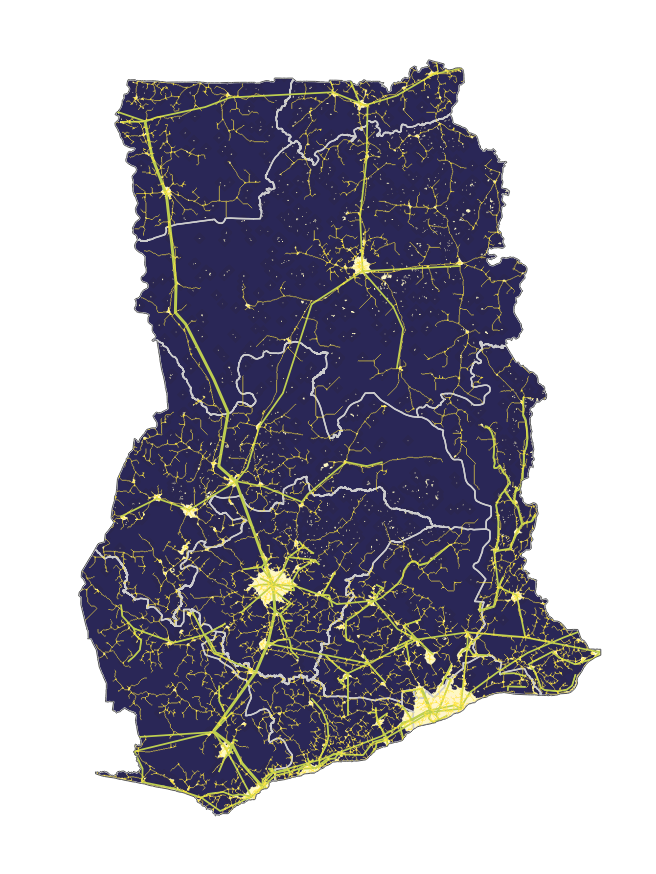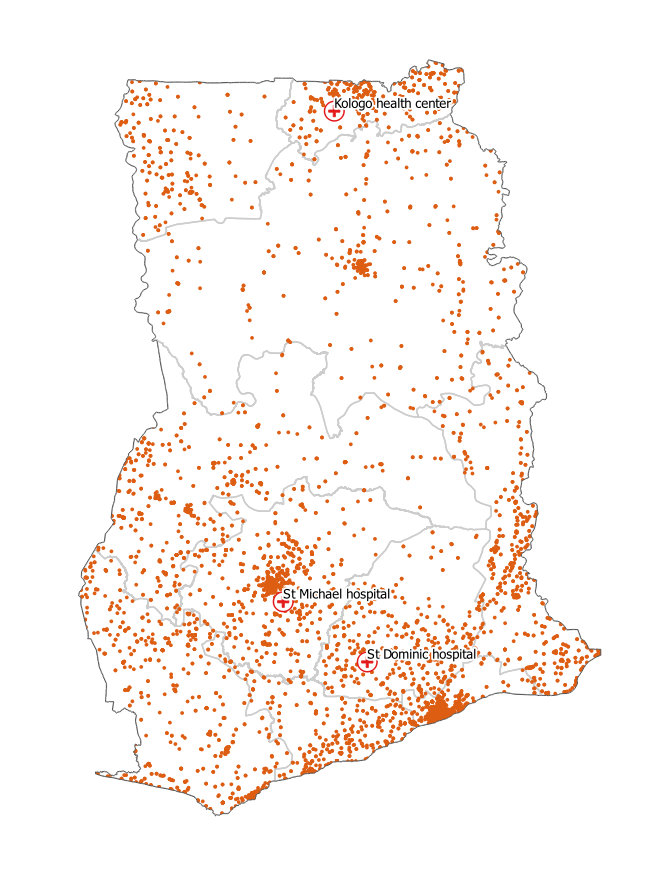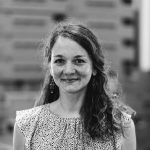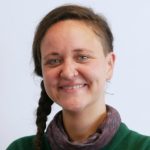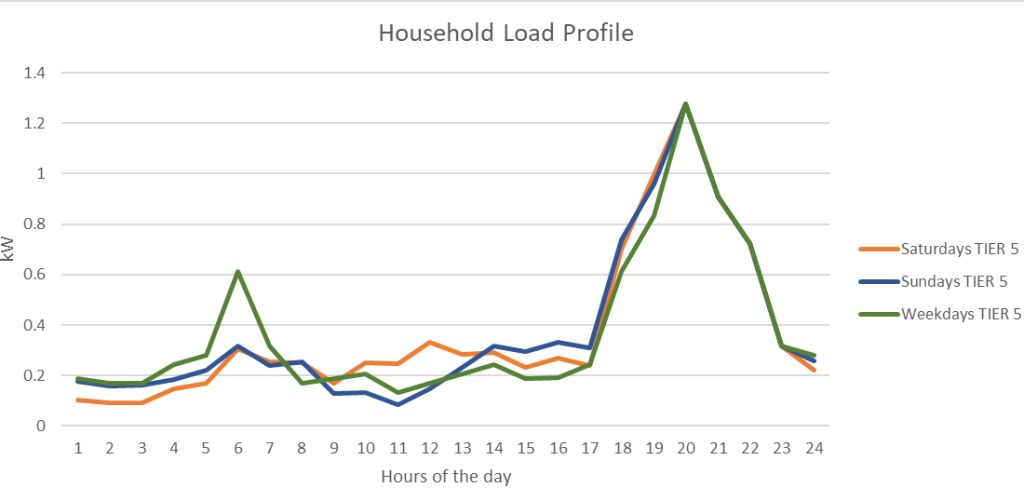
Interview with Katrin Lammers, Avia Linke & Andrés Andrade on the recent working steps of the Reiner Lemoine Institute for the EnerSHelF project.
In the past interview with your colleague Catherina Cader, she showed first maps visualizing the health centre distribution and electricity supply across Ghana. How have you developed the data since?
Since the last time, we continued to gain insights from our geospatial data by analysing it together with newer, more up-to-date datasets. We have now, for example, a better understanding of the number of hospitals more likely to need electrification, the types and sizes of communities that surround our hospitals, and the population that would be covered by their services. We have been compiling and processing these data, picking attributes and information from them that we think will be more relevant for our final visualization. For this, during the past months we have been thinking of and working on a concept for the development of a web map tool that should display not only the already mentioned datasets, but also our electrification strategy, in a clear and meaningful way.
The goal of RLI is to develop an electrification and market introduction strategy for PV hybrid systems for health care centres and surrounding communities in Ghana. At what point of the process are you at?
Based on the outcome of our geospatial analysis, we selected most suitable sites of health facilities to develop the electrification and market introduction strategy. Currently we are modelling the demand for 184 non-electrified or subpar electrified selected health facilities and their surrounding communities applying the Python-based open-source tool RAMP. The demand analysis lays the foundation for the energy system modelling to derive site specific and accumulated PV capacities and market potential. As mentioned earlier, we are currently working on a strategy to integrate and visualize the findings of the electrification strategy and market potential analysis into the web-map.
During one of our last monthly seminars, you presented a first version of a web mapping tool. Can you explain how the tool can be used and by whom?
The basic idea of the webmap is to make insights openly available to a wide group of interested stakeholders. The platform provides an overview of:
Average energy system results for webmap regional overview
- Number of households
- Number of hospitals
- Capital expenditure (CAPEX)
- Overall PV capacity
- Renewable energy (RE) share
Energy system results for webmap for each site (hospital & hospital plus community)
- Demand (average/peak)
- Installed capactiy (PV, diesel, battery)
- Levelised cost of electricity (LCOE)
- RE share
- Liter diesel consumed
- CO2 emissions
The user can also investigate detailed modelling results of the simulated hospitals, next to the regional aggregates.
Besides the visualization of your data, what are you currently working on? What are your next steps?
The demand estimation and energy system modelling for 184 health facility sites in Ghana is currently our core work. We are acquiring data and estimating electricity demand to map different scenarios to electrify the selected health facilities considering the influence of Covid-19, different energy sources and setups as well as sensitivities to diesel prices, CO2 emissions and technology cost.
Katrin Lammers works at the Reiner Lemoine Institute as a researcher specializing in supporting the design of off-grid energy systems that can withstand climate change impacts. She is currently completing her doctoral dissertation, which examined electricity access and climate change impacts on Southeast Asian islands. Sustainable electricity access is a prerequisite for many adaptation measures. Therefore, she investigated what climate resilient energy systems can look like to maintain positive adaptation potentials for local communities. Katrin is concerned about climate change and wants to integrate climate change risk assessments into energy system planning. She is particularly passionate about environmental protection, the energy transition, and social justice.
Avia Linke works as a researcher in the unit Off-Grid-Systems at RLI gGmbH. Prior to that she was already a student assistant at the RLS Graduate School. Avia holds a bachelor’s degree in Engineering Science with a focus on fluid dynamics and thermodynamics from TU Berlin. In her bachelor’s thesis, she dealt with PIV flow investigation in a stenosed aorta. Her master’s thesis, which she wrote together with a fellow student, concerned the design, construction, and testing of a micro wind turbine for battery charging. Besides her work at RLI, she supports political and scientific educational workshops, is involved in climate justice, climate action and political music festivals.
Andrés Andrade works as a student assistant at the Reiner Lemoine Institute since May 2021. He is currently enrolled in the master’s degree program Geodesy and Geoinformation Science at the Technical University of Berlin. As part of his master’s thesis, Andrés supports the EnerSHelF team by co-developing a web map tool for the visualization of healthcare facilities, their surrounding communities, and the potential strategies for their electrification. Andrés is particularly interested in the application GIS-based and data-driven methods in questions of urban development, from transport, to land-development and energy systems. He holds a bachelor’s degree in Liberal Arts and Sciences from the University of Freiburg, where he wrote his dissertation on the automatic classification of urban 3D point clouds using deep neural networks.
